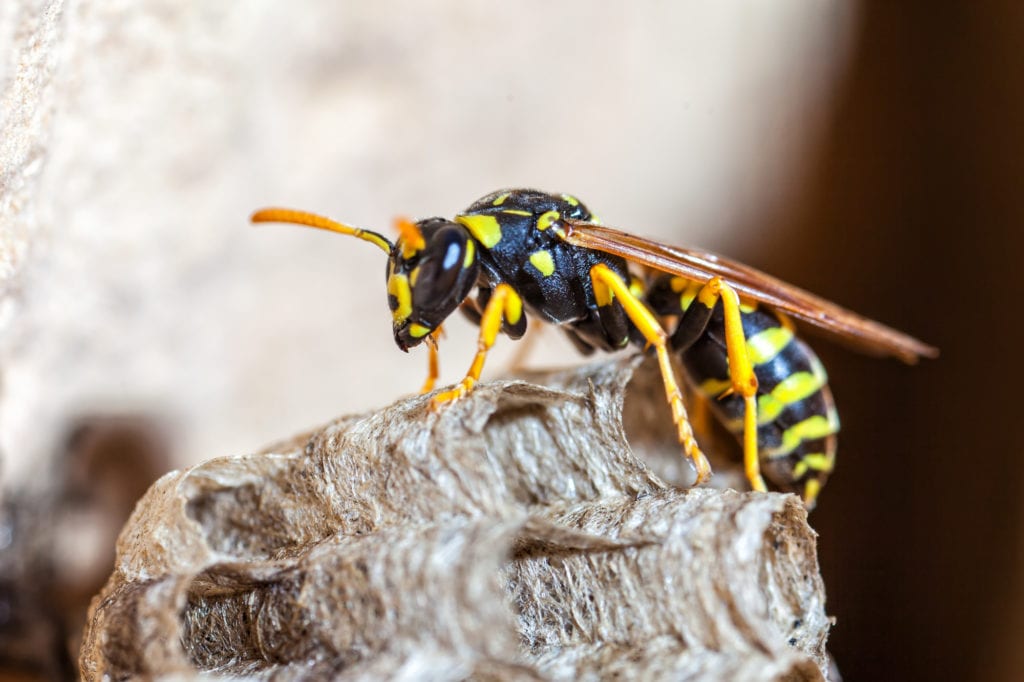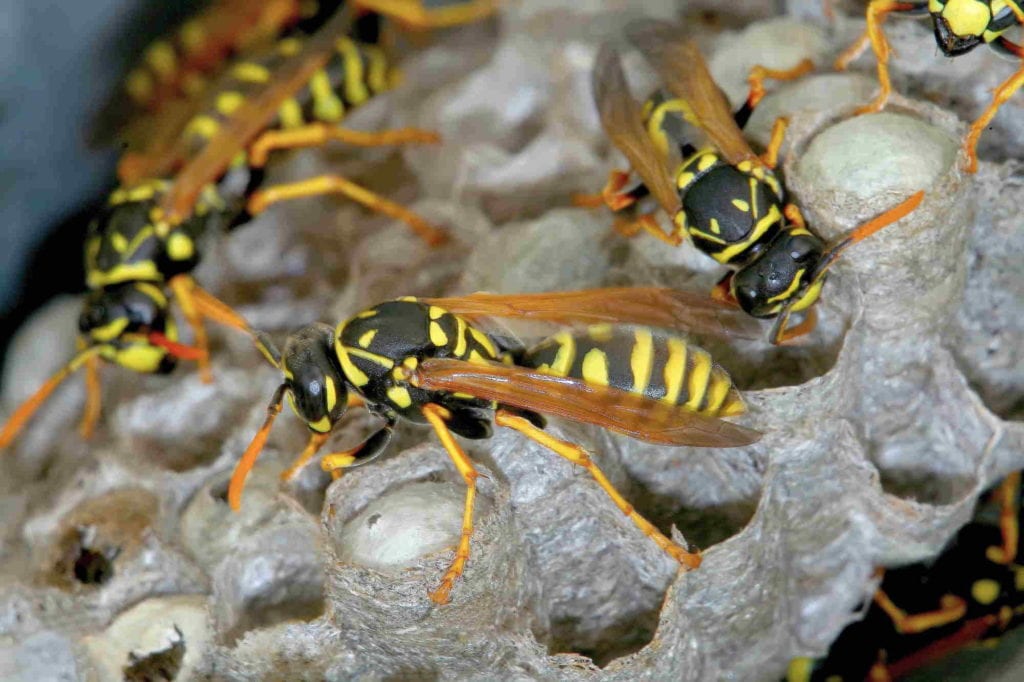
How to Remove Wasps | 3 Actionable Solutions to Get Rid of Them
There are several things you should do if you have wasps on your property. Here are 3 things you can do to get rid of wasps for good.
It’s finally summer. You’ve been waiting all year for pool parties, family barbecues, and being able to lounge on your patio. But all of your plans are on hold because of the gigantic nest outside swarming with wasps.
You’ve probably thought about trying to remove the nest, but it’s a scary task that you haven’t figured out how to approach yet. Fortunately, our guide will give you all the best tips on how to remove wasps and get back to your summer plans.
Types of Wasps
Wasp is the general term for the stinging insects that build their nests around your home every summer. When removing a wasps nest, knowing what type of wasps inhabit it is a crucial step to staying safe.
Yellowjackets
Yellowjackets have a yellow and black pattern that covers their body, and they have a slender abdomen that distinguishes them from bees.
Yellowjackets are attracted to the sweet scents that come from flowers and fruit. While yellow jackets aren’t particularly aggressive, but they are extremely territorial, so you should avoid their nests if possible.
Yellowjackets have annual colonies that can build their nests alongside of your house, shrubbery, and even more inconveniently, underground. Yellowjacket nests are paper-like constructs about the size of a basketball, with one small opening for the wasps to enter and exit from.
Hornets
While there are subspecies of hornets, the only type you’ll encounter in the United States is the European hornet. These hornets are brown with bright orange or yellow stripes, have thicker abdomens, and are about an inch to an inch and a half in size.

Hornets aren’t as attracted to nectars and fruits because their primary diet consists of other insects. Hornets won’t go out of their way to sting you but are even more aggressive than yellow jackets when threatened, so it’s best to avoid their nests.
Hornets have annual colonies and tend to build their nests wherever they’ll be sheltered from harsh weather; some of these places can be on the siding of houses, under thick tree branches, and even inside attics. Their teardrop-shaped hives are also made from a paper-like material and about the size of a basketball.
Mud Daubers
Mud daubers are about an inch in length and have long and very narrow waists. They’re typically all or mostly black and can have discreet yellow markings or sometimes a metallic luster.
Mud daubers eat both the nectar from flowers as well as a variety of spiders. They’re not aggressive and unlikely to sting you, even when disturbed. Since mud daubers are solitary wasps they’re not territorial over their nests.
Their nests are built from mud and are usually tube or dome-shaped, and they typically aren’t very large since only one wasp occupies them. Even though mud daubers don’t pose much of a threat, leaving their empty nests can provide shelter for more dangerous wasps; so it’s best to remove the nests once they’ve been abandoned.
Paper Wasps
Paper wasps also have a variety of subspecies that you may come across but they also look the same. These wasps have brown bodies with yellow or red markings, longer legs, and they typically don’t get larger than ¾ of an inch.
Paper wasps are also omnivores and eat a variety of pest insects as well as nectar. Paper wasps are not usually aggressive but are protective of their nests, so their nests should be avoided if possible.
Paper wasps are semi-social wasps, meaning they usually have hives with smaller-sized colonies. Their nests are made from a paper-like material and shaped similar to umbrellas, with open cells where the queen lays her eggs. These nests are often built hanging from branches, door frames, the tops of windows, outdoor ceilings, and several other similar structures.
How to Remove Wasps
Now that you know what type of wasps you’re dealing with, you can start planning how to remove the wasps. There are a couple do it yourself methods, but the safest and most efficient wasp removal method will always be to hire a professional.
Wasp Sprays
There are a lot of wasp sprays available, and they’re all effective at killing wasps, just make sure to get a bottle or can that can spray up to ten feet away to keep yourself safe.
You should use wasp spray at night when the wasps are the least active. If you decide to go this route, make sure to use a red light source because wasps can’t see the color red.
After you’ve sprayed a wasp nest, you should leave it alone for a couple of days to make sure all of the wasps are dead before trying to remove the nest.
Wasp Traps
You can buy wasp traps at your local home improvement store, and there are even instructions to make your own wasp trap at home. Wasp traps use bait to attract the wasps inside and then block them from getting back out. Traps can only be used on certain types of wasps though, and they’re also likely to attract other insects.
Hire an Exterminator
The safest and most effective way to remove wasps is by hiring an exterminator. Exterminators have the proper gear for keeping themselves safe while removing the wasps. Exterminators can also spray to get rid of other insects that may have attracted the wasps in the first place.
The cost of an exterminator can greatly vary, depending on the type of wasp infestation you have, the location of the wasp nest, and the method they have to use to remove the wasps. The three methods exterminators use for wasp removal are aerosol, dusting, and vacuuming. To learn more about these methods of wasp removal, take a look at our page about wasp control.
Benefits of Hiring an Exterminator
- Exterminators have the proper equipment to efficiently remove all of the wasps and their nests.
- Exterminators are the safest solution, especially for people with allergies to bee and wasp stings.
- Exterminators will follow up if there are any additional problems.
- Exterminators can use preventative measures to keep wasps from coming back.
- Exterminators remove the guessing games involved with other methods.
- Exterminators can use green products that won’t leave harmful chemicals in your house or yard.
Get an Exterminator Quote Today
Now that you know the different ways on how to remove wasps, you may be indecisive on which route you want to take. Before you try to do it yourself, check out our website for a free quote for an exterminator near you.


Leave a Reply